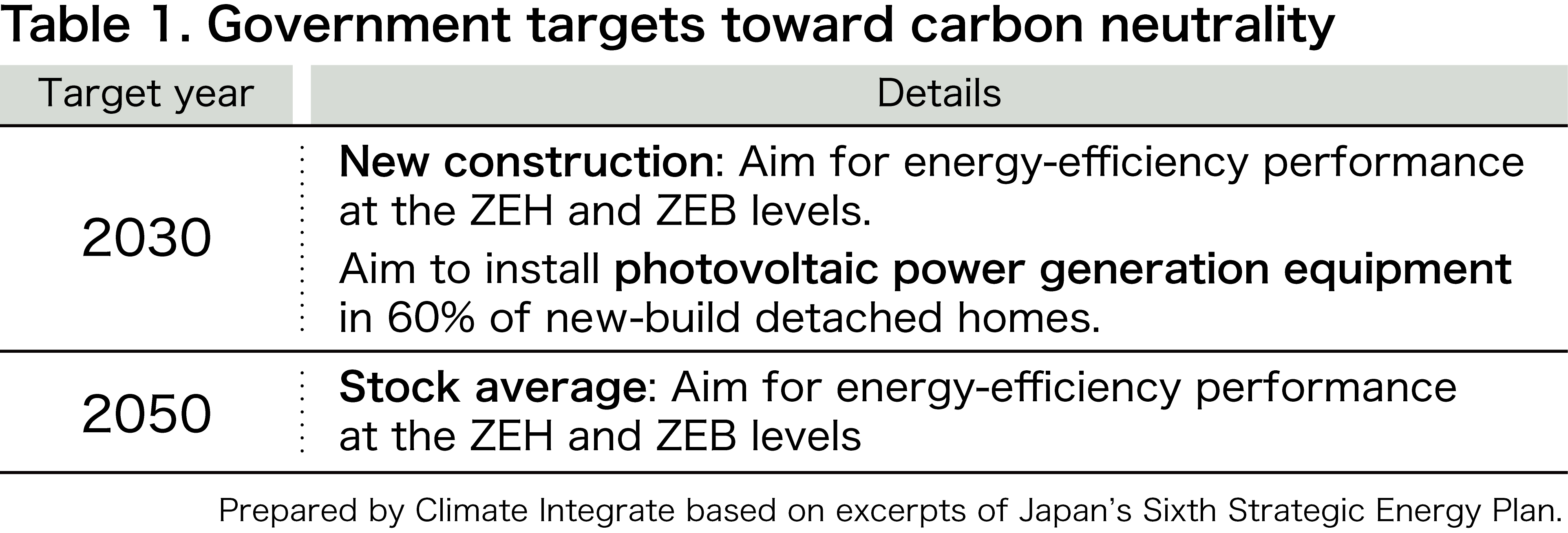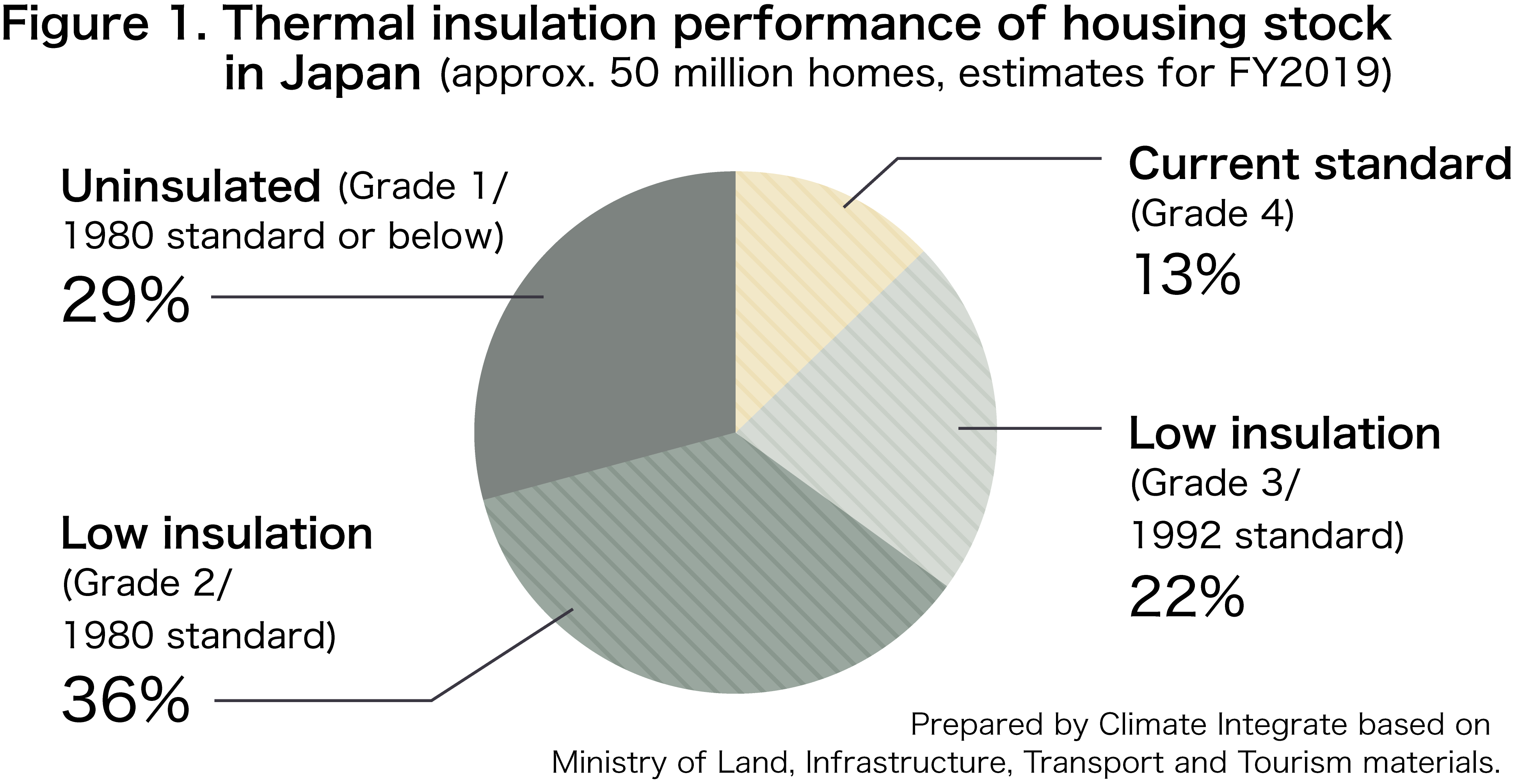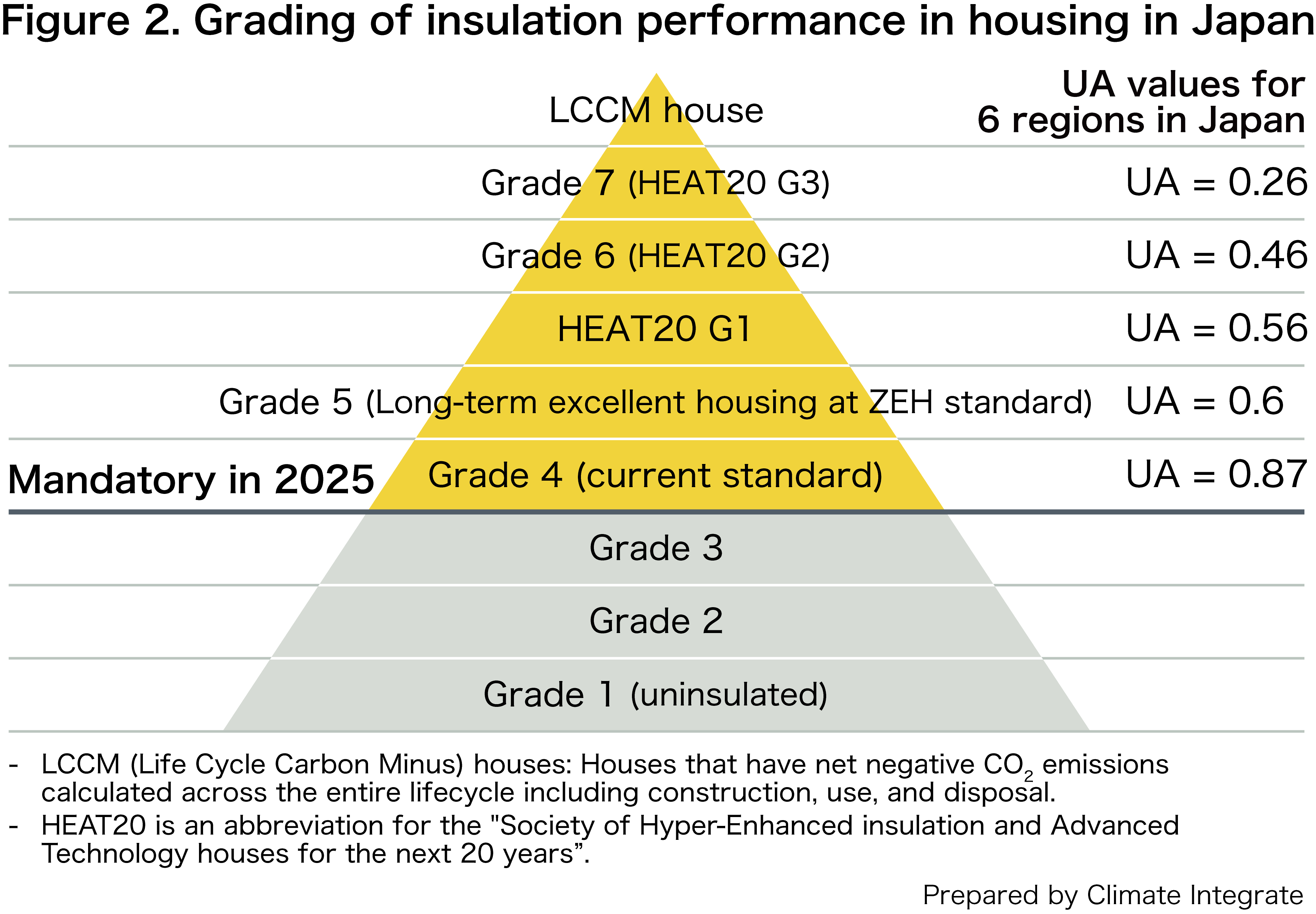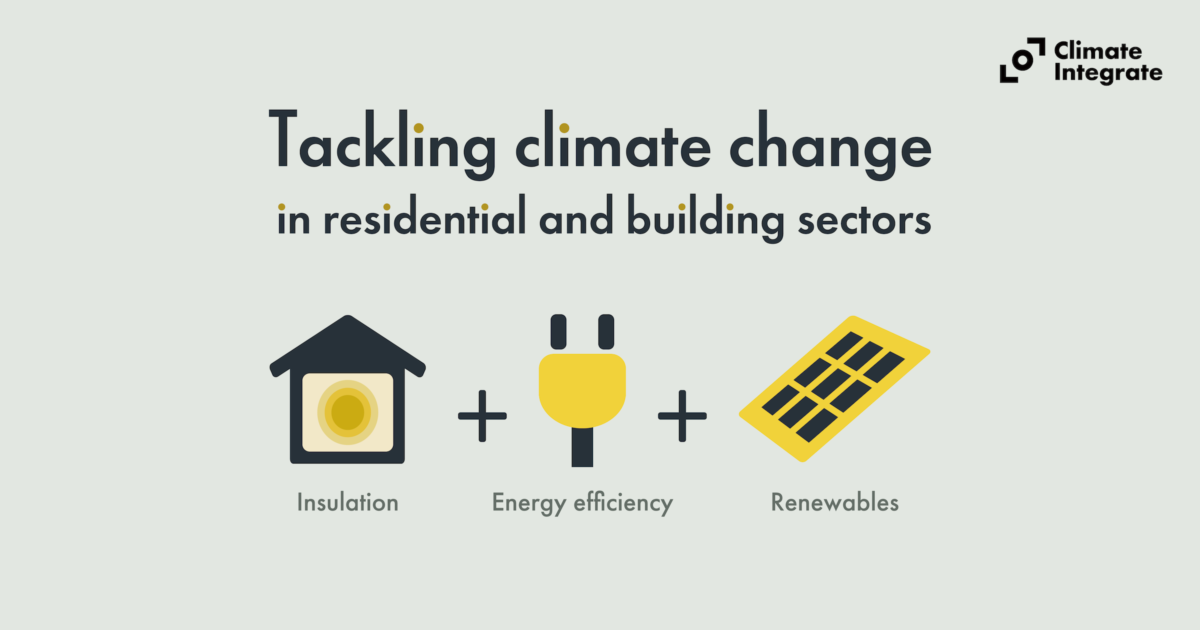Reduce CO2 emissions. Enhance comfort. And promote health. All at once!
Our homes and buildings protect us from the rain, wind, sun, and outdoor hazards, and provide us space for living, working, studying and entertaining. But their use causes the consumption of a vast amount of energy. Here we look at how we can address climate change while improving comfort in the residential and building sectors.
Ⅰ. Housing in Japan
Too hot, too cold
People need proper room temperatures in order to stay healthy, but the reality is that many Japanese homes are too hot in summer and too cold in winter.
During hot weather, the World Health Organization(WHO) recommends that people do what they can to meet a global standard of maintaining maximum room temperatures of 32℃ during the day and 24℃ at night. During cold weather, WHO recommends maintaining indoor temperatures of at least 18℃ in winter, knowing that low indoor temperatures
can lead to serious health impacts. However, only 10% of housing in Japan has room temperatures that meet WHO’s recommended winter standards, and many Japanese people are accustomed to their homes being cold in winter.
Prepared by Climate Integrate based on WHO[1],[2] and Japan Sustainable Building Consortium materials.[3]
Ⅱ. Health risks in cold houses
Prepared by Climate Integrate based on WHO[2] Japan Sustainable Building Consortium materials.[4]
A person living in a cold house faces elevated health risks from higher blood pressure, asthma, poor mental health, and other impacts. Moving from a warm to a cold room to change or take a hot bath can increase the risk of heat shock, resulting in a cerebral hemorrhage, heart attack, or stroke.[5]
Japan’s Consumer Affairs Agency advises people to warm their bathrooms and changing areas before bathing. A sudden change in blood pressure due to temperature differences can reduce blood flow in the brain and cause fainting. A person could drown if this occurs while bathing. Many more people die from heat shock than from traffic accidents.
As a measure against cardiovascular disease, the Ministry of Health, Labour and Welfare has declared a goal of reducing systolic blood pressure by an average of 4 mmHg among the population aged in the forties to eighties. It estimates that this could reduce annual stroke deaths by about 10,000. It has also been shown that poor insulation performance can lead to increased blood pressure and blood lipids(cholesterol levels). Conversely, studies have shown that better insulation can have beneficial effects regarding these conditions. The point is that we can be healthier if we live in warm homes.
Prepared by Climate Integrate based on Japan Sustainable Building Consortium materials.[6]
Ⅲ. The need for strong policy
90% of housing stock in Japan has minimal or no insulation

Prepared by Climate Integrate based on excerpts of Japan’s Sixth Strategic Energy Plan
Poor insulation performance is the reason Japanese houses are hot in summer and cold in winter. This results in increased use of air conditioners and heaters, as well as higher utility costs. Unfortunately, air conditioning cannot compensate for poor insulation. Even today, about 90% of housing stock in Japan has little or no insulation (Fig. 1), and 70% of windows still only have single-pane glass, which allows heat to escape. Insulation is also often insufficient in commercial buildings, hospitals and hotels, as well as public facilities such as kindergartens, nurseries, schools, and seniors’ facilities.
In addition, only about 6.3% of housing (as of FY2021) has solar panels on the roofs.[7] Likewise, solar panels are being installed on some factories, commercial buildings, and schools, but such cases are still rare.

Prepared by Climate Integrate based on Ministry of Land, Infrastructure, Transport and Tourism materials.[8]
The government has set targets to achieve energy efficiency performance in Net Zero Energy Houses (ZEH) and Net Zero Energy Buildings (ZEB) levels (Table 1), and mandatory energy-efficiency standards for housing and buildings, going into effect starting in 2025. However, standards (Grade 4 in the residential sector) are lax relative to other countries (Figs. 2 and 3). To achieve greater energy-efficiency benefits, Japan needs to raise the standards to ZEH and ZEB levels or higher.

Prepared based on Ministry of Land, Infrastructure, Ministry of Land, Infrastructure, Transport and Tourism materials (p. 35).
Ⅳ. What’s next?
Prepared by Climate Integrate based on Ministry of Land, Infrastructure, Transport and Tourism materials etc.
Toward zero-emissions
To reduce energy consumption and CO2 emissions in the residential and building sectors to close to zero, it is crucial to proceed thermal insulation, energy efficiency, and renewable energy.
Actions can help reduce CO2 emissions, improve comfort, promote health, and lower utility costs. Rather than just putting up with the heat and cold in housing and buildings, let’s take effective actions while confirming the benefits.
Toward effective policy in residential and building sectors
- Central government
- Improve insulation performance standards to Grade 6 and above
- Standardize renewable energy in new homes and buildings
- Expand support programs for existing homes and buildings
- Regulate excessive large-scale developments
- Prioritize support for socially vulnerable and low-income populations
- Local governments
- Promote ZEB for public facilities
- Standardize and incentivize Grade 5, Grade 6 and higher
- Standardize the introduction of renewable energy for new homes and buildings
- Support measures for renovations to better insulate existing homes
- Provide advice to businesses and residents
- Utilize subsidies
- Businesses
- Conduct energy efficiency diagnoses
- Promote ZEB for factories and workplaces during expansion/renovation
- Introduce/purchase renewable energy at factories and workplaces
- Utilize subsidies
- Individuals
- Renovate to insulate, control insolation (with eaves, shading, louvers, etc.)
- Check household appliance efficiency
- Install renewable energy
- Switch utilities to purchase renewable electricity
- Consider opportunities for effective energy use
- Utilize subsidies
[1] WHO (2018), Heat and Health.
[2] Who (2018), WHO Housing and Health Guidelines (P17. Table 1).
[3] Japan Sustainable Building Consortium (2023) “7th Reporting Session on National Survey on Insulating Homes and Health Impacts for Residents” (in Japanese).
[4]Japan Sustainable Building Consortium (2023) “7th Reporting Session on National Survey on Insulating Homes and Health Impacts for Residents” (in Japanese) (see Footnote 3).
[5] Consumer Affairs Agency (2022) “Data and advice on accidents involving the elderly (in Japanese)“
[6] Japan Sustainable Building Consortium (2023), “7th Reporting Session on National Survey on Insulating Homes and Health Impacts for Residents” (in Japanese) (see Footnotes 3 and 5 above).
[7] Ministry of the Environment (2023) “Summary of Results of Statistical Survey on Actual CO2 Emissions in the Household Sector in 2021 (Final Report, in Japanese).”
[8] Ministry of Land, Infrastructure, Transport and Tourism “Toward the realization of a decarbonized society, further improving the energy-saving performance of buildings, promoting the use of wood in buildings that contribute to CO2 storage, and comprehensively promoting the longevity of existing building stock” for “Future Energy Saving Measures for Residential and Building Sectors” (3rd Report) and “The state of the Building Standards System” (4th Report)“ (reference materials, in Japanese) (P. 48).
Written by: Kimiko Hirata, Atsuko Kawaguchi








